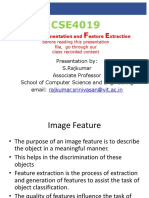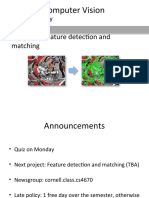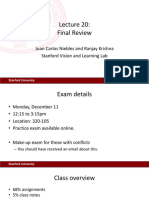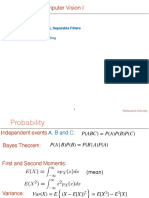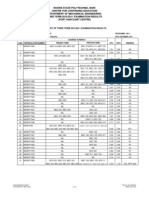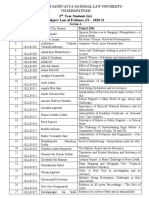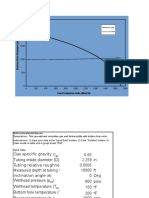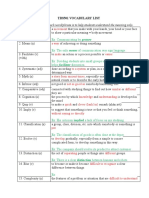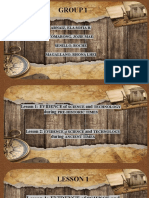0% found this document useful (0 votes)
87 views59 pagesEECE 5639 Computer Vision I: Edge Detection, Corners Hw2 Has Been Posted
This document discusses computer vision techniques for edge and corner detection. It provides an overview of using machine learning to train an edge detector using labeled image patches. The key steps are extracting image patches, assigning labels, extracting features from patches, and training a classifier. It then compares Canny edge detection to a structured edge detector trained this way. It also covers corner detection techniques, including the Harris corner detector which uses eigenvalues of a matrix derived from image gradients to identify corners based on intensity changes around points.
Uploaded by
Sourabh Sisodia SrßCopyright
© © All Rights Reserved
We take content rights seriously. If you suspect this is your content, claim it here.
Available Formats
Download as PDF, TXT or read online on Scribd
0% found this document useful (0 votes)
87 views59 pagesEECE 5639 Computer Vision I: Edge Detection, Corners Hw2 Has Been Posted
This document discusses computer vision techniques for edge and corner detection. It provides an overview of using machine learning to train an edge detector using labeled image patches. The key steps are extracting image patches, assigning labels, extracting features from patches, and training a classifier. It then compares Canny edge detection to a structured edge detector trained this way. It also covers corner detection techniques, including the Harris corner detector which uses eigenvalues of a matrix derived from image gradients to identify corners based on intensity changes around points.
Uploaded by
Sourabh Sisodia SrßCopyright
© © All Rights Reserved
We take content rights seriously. If you suspect this is your content, claim it here.
Available Formats
Download as PDF, TXT or read online on Scribd
/ 59



















